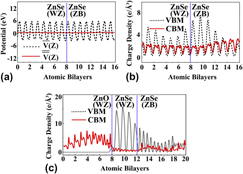Crossref Citations
This article has been cited by the following publications. This list is generated based on data provided by
Crossref.
Cao, Yiyan
Wu, Zhiming
Ni, Jianchao
Bhutto, Waseem. A.
Li, Jing
Li, Shuping
Huang, Kai
and
Kang, Junyong
2012.
Type-II Core/Shell Nanowire Heterostructures and Their Photovoltaic Applications.
Nano-Micro Letters,
Vol. 4,
Issue. 3,
p.
135.
Chen, W.
Zhang, N.
Zhang, M. Y.
Zhang, X. T.
Gao, H.
and
Wen, J.
2014.
Controllable growth of ZnO–ZnSe heterostructures for visible-light photocatalysis.
CrystEngComm,
Vol. 16,
Issue. 6,
p.
1201.
Yang, Lin
Zhou, Ru
Lan, Jolin
Zhang, Qifeng
Cao, Guozhong
and
Zhu, Jianguo
2014.
Efficient band alignment for ZnxCd1−xSe QD-sensitized TiO2 solar cells.
Journal of Materials Chemistry A,
Vol. 2,
Issue. 10,
p.
3669.
Wu, Zhiming
Wang, Weiping
Cao, Yiyan
He, Jialun
Luo, Qiang
Bhutto, Waseem Ahmed
Li, Shuping
and
Kang, Junyong
2014.
A beyond near-infrared response in a wide-bandgap ZnO/ZnSe coaxial nanowire solar cell by pseudomorphic layers.
Journal of Materials Chemistry A,
Vol. 2,
Issue. 35,
p.
14571.
Gopi, Chandu V. V. M.
Venkata-Haritha, M.
Kim, Soo-Kyoung
and
Kim, Hee-Je
2015.
A strategy to improve the energy conversion efficiency and stability of quantum dot-sensitized solar cells using manganese-doped cadmium sulfide quantum dots.
Dalton Transactions,
Vol. 44,
Issue. 2,
p.
630.
Wang, Weiping
Cao, Yiyan
Wu, Zhiming
He, Jialun
Luo, Qiang
Bhutto, Waseem Ahmed
Li, Heng
Wen, Yuhua
Li, Jing
Li, Shuping
and
Kang, Junyong
2015.
Ultrawide photoresponse in ZnO/ZnSe coaxial nanowires with a threshold of 0.8 eV.
International Journal of Hydrogen Energy,
Vol. 40,
Issue. 34,
p.
10788.
He, Jialun
Wang, Weiping
Zheng, Xuanli
Cao, Yiyan
Kong, Lijing
Wu, Yaping
Wu, Zhiming
and
Kang, Junyong
2018.
Enhanced photocatalytic efficiency of ZnO/ZnSe coaxial nanowires through interfacial strain modification.
Physica E: Low-dimensional Systems and Nanostructures,
Vol. 103,
Issue. ,
p.
430.
Pat, Suat
Mohammadigharehbagh, Reza
Akkurt Özgür, Nihan
and
Korkmaz, Şadan
2024.
Optical properties of Se-doped ZnO nanocrystalline thin films deposition by thermionic vacuum arc system.
Infrared Physics & Technology,
Vol. 137,
Issue. ,
p.
105170.





